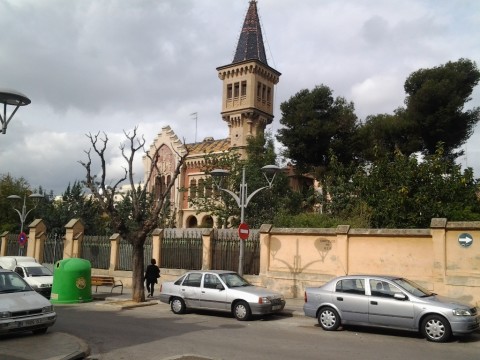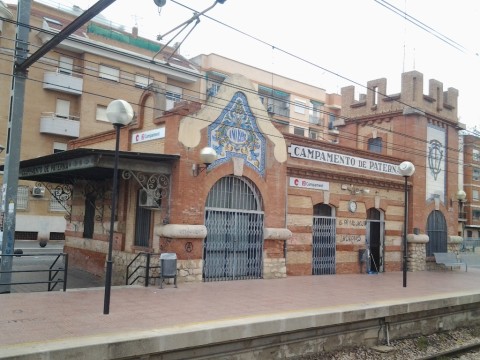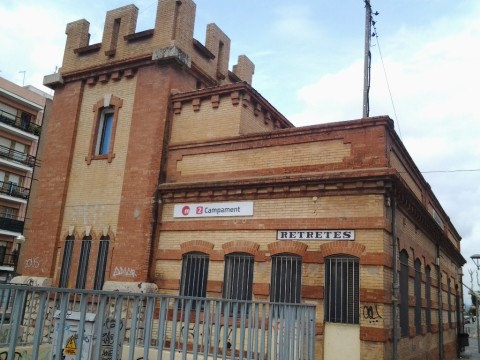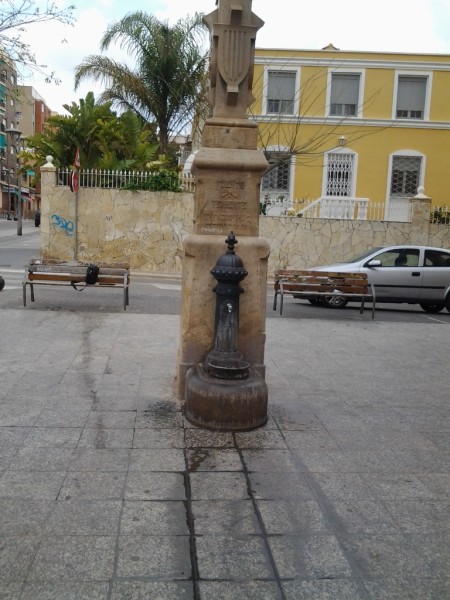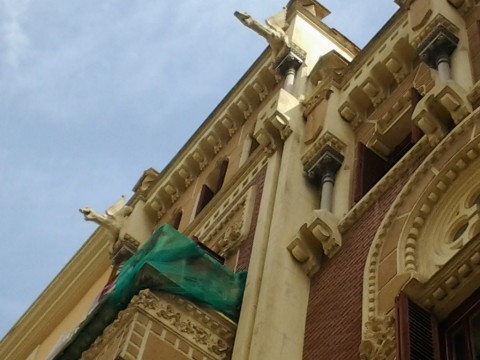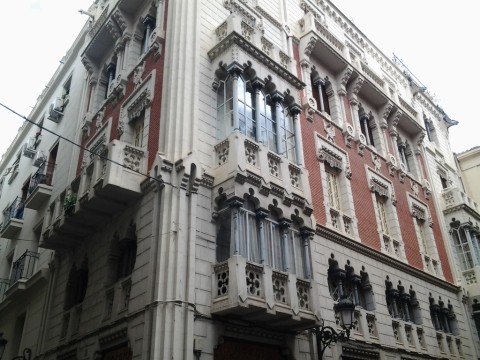I visited the old railway station at Campament originally as part of my investigations into the architectural work of Francisco Mora, the man who designed the Colón Market;
however, I noticed a small monument just across the street and was surprised to discover that I was in a location I had intended to visit another time.
The monument was a small fountain with a plinth, dedicated to one Lieutenant Cortina, killed in action in the war against the Arabs in Melilla.
The name rang a bell, and then I remembered that Cortina was the architect of the House of the Dragons, near Colón Market, and that he had a house, or palace, nearby.
I asked a local man, who didn’t know the name, but knew of a spectacular palace just up the road, and it turned out to be the right one; the proof being that the street on one side of it was in fact named after the architect, José María Manuel Cortina Pérez, (1868 – 1950).
The building is embarrassingly extravagant, especially as it is surrounded by others which are far less so, but is unfortunately defended by a high wall, which makes it hard to see in its full glory. Also, it appears to be inhabited, which makes clambering up the wall a bad idea.
Like his contemporary Mora, Cortina studied in Barcelona, there being no architecture faculty in Valencia at the time, and also in Madrid.
Like Mora, he was a great advocate of Art Nouveau architecture, and like Gaudí was fascinated by dragons, which typically slide and glide all over his buildings.
His House of the Dragons forms part of the audio tourist routes available to those who visit Valencia looking for a little bit of culture, and is one of the city’s most outstanding monuments, considering that it is merely a residential block and not a church or palace.
https://valencia-international.com/dragons-streets-valencia/
Two lesser known but equally impressive buildings by Cortina are to be found in Calle Felix Pizcueta, 3, built in 1886
and Calle Caballeros, 8, built the following year.
So; is there a relation between Cortina the architect and Cortina the Lieutenant, whose fountain is less than 100 metres away from the palace in Paterna?
Many months later I found the answer in the local library. The young soldier was the architect’s nephew.
The monument
was officially inaugurated by King Alfonso XIII on the 12th May 1923, as was the street called ‘Calle Héroes de Monte Arruit’, which was where Cortina met his death on the 9th August 1921.

